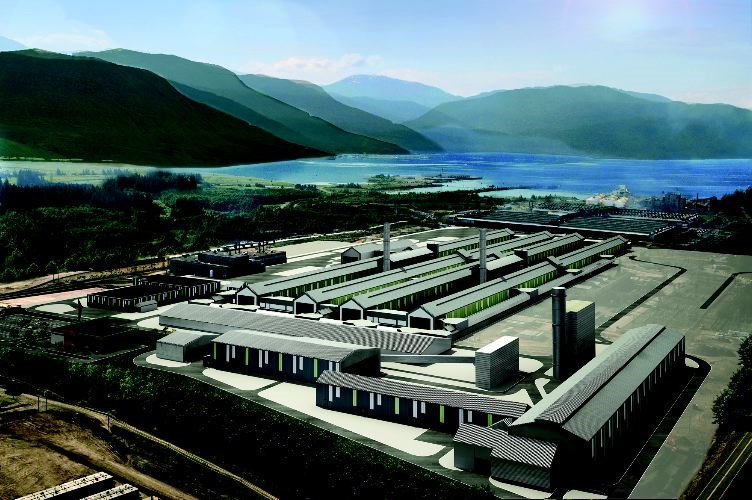Rio Tinto Alcan's smelter is more than 600 kms from Prince George, at the headwaters of the Nechako River, but like the river itself there are benefits flowing all the way to Prince George.
According to RTA's Paul Henning, their vice-president of B.C. operations and Western Canadian strategic projects, B.C.'s northern capital is getting a noticeable economic bump from the massive construction projects underway at their Kitimat facilities.
RTA is in the process of investing about $3.3 billion to revamp its existing aluminum smelting operation with a brand new one (while the old one still processes the raw metal into ingots), and also dig a backup tunnel within Mt. Dubose for electricity generation security at their Kemano River powerhouse.
"This is a megaproject," said Henning, who came to Prince George for an audience with the Chamber of Commerce to discuss the mutual benefits of their Kitimat Modernization Project. "Prince George is providing us many services. In the scheme of things it looks quite small, but we spent to the tune of $150 million to $160 million in Zone 1, and then another $140 million in Zone 2."
In RTA's planning strategy, Zone 1 refers to the area immediately around Kitimat and the west coast, while Zone 2 refers to the central interior and particularly Prince George. RTA also has a zone encompassing the rest of B.C. and a fourth zone for all points beyond.
RTA specifically publicized a policy of hiring local people first, said Henning, and this wasn't merely a sentimental advertisement. The planning of the megaproject included detailed estimates of labour availability and procurement options in each zone.
In Kitimat, the company has about 1,000 people involved in the project's construction and about 1,300 more in various other direct employment capacities, said Henning.
"Most from the immediate region," he said. "Well over 80 per cent of engagement on the construction side is in zone 1 and 2. We are really proud of that, and there is a real business case to having those people in the area. We get a double benefit from that because there are fewer who need to be housed at our work camp, and more that are then in a good professional relationship with us and wanting to stay in the area so we have easier access to them and they are engaged in the community that we call home along with all the other people we work with on the smelter side."
When procurements happen - buying products and services for the construction project - there was also a high level of participation from the first two zones. This ensured easier relationships for both RTA and the firms they hired, but because RTA operates on an international scale with top-shelf safety and professional standards requirements, it boosts those local firms who win their bids. Those companies are then more able to bid on other major projects, many of which are proposed for the region.
"That expanded manufacturing base you have in Prince George is working for the smelter upgrades and the tunnel project, and I am delighted we have that so close at hand," Henning said. "It shows local companies can be competitive and win bids within this megaproject. The pre-qualifications are onerous, but once they are done that becomes very, very valuable to the company providing that service. It gives local business a head start into dealing with others. It gives them a good foot into their processes. The willingness by local companies to engage with us has been just fabulous. And we're not perfect either, we are learning all the time from these companies, so it is a win-win."


